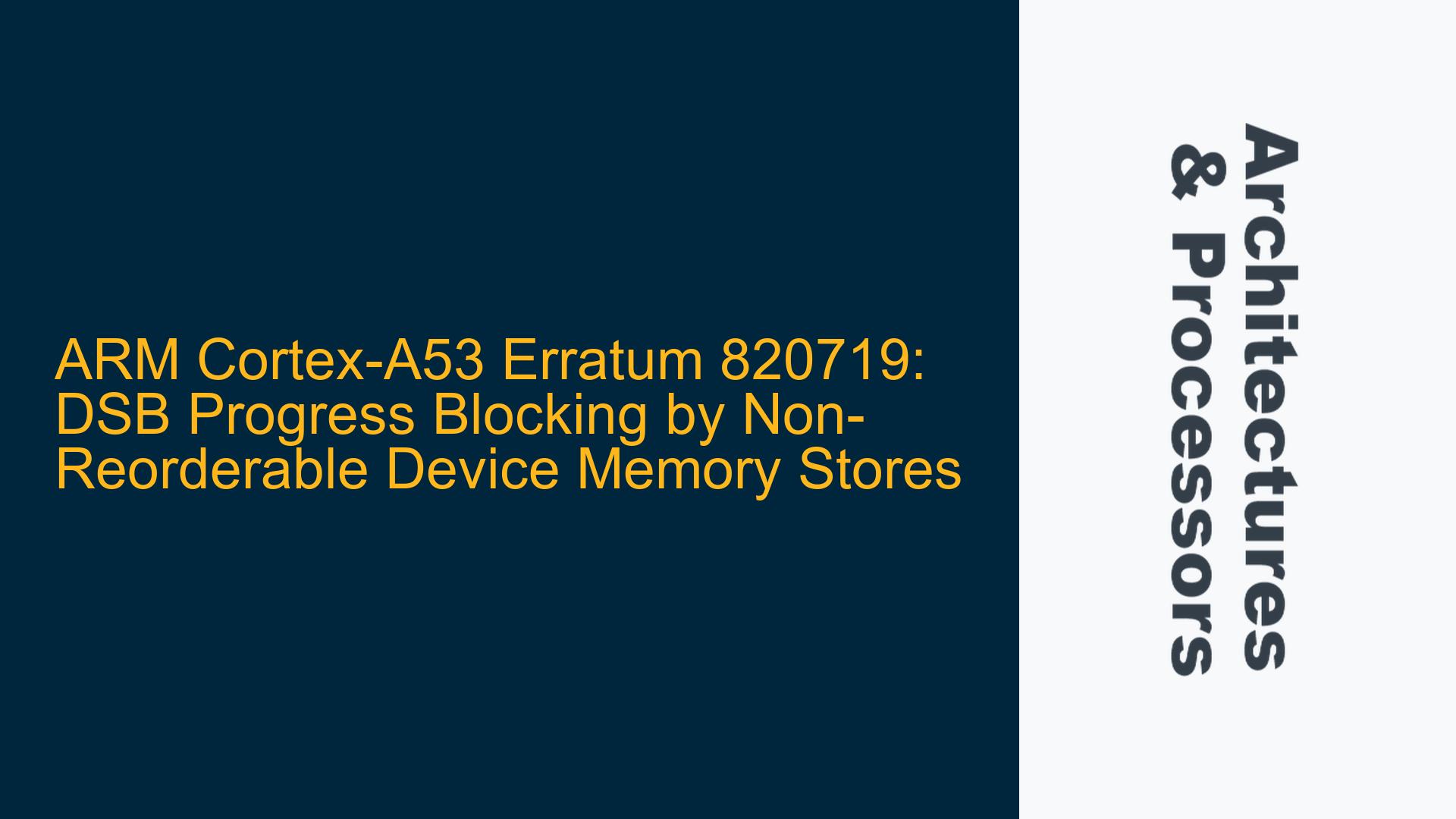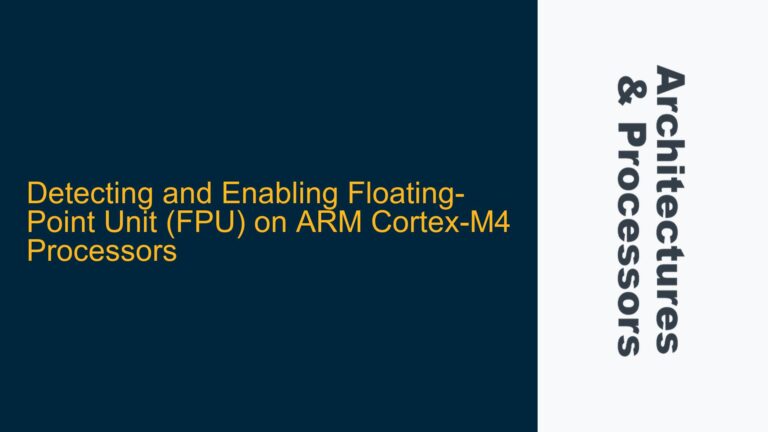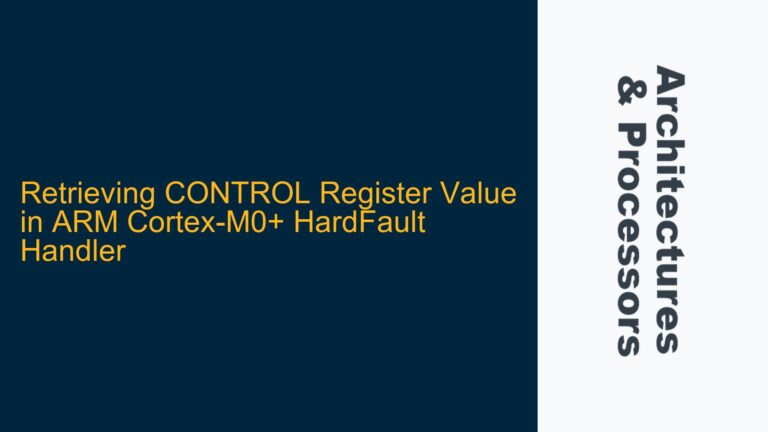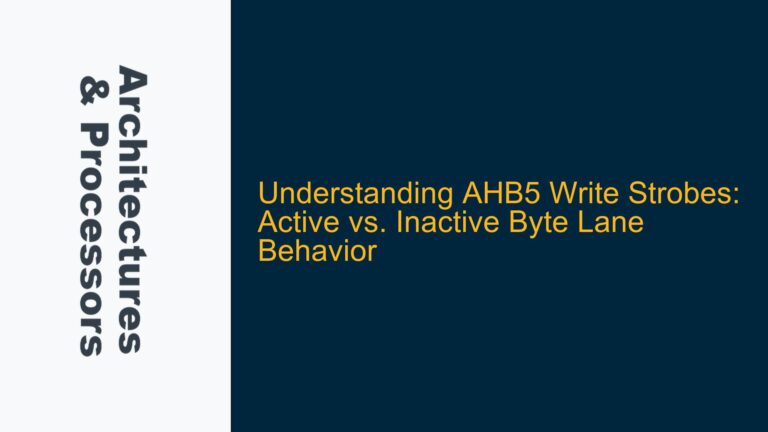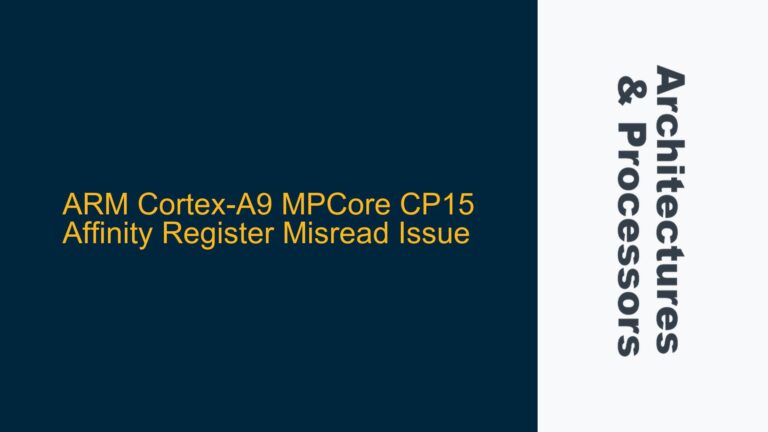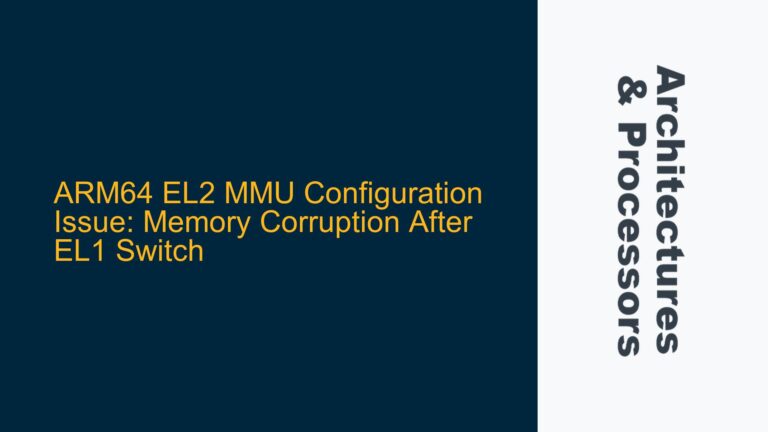ARM Cortex-A53 DSB Instruction Progress Blocking Issue
The ARM Cortex-A53 processor, a widely used 64-bit core in embedded systems, exhibits a specific erratum identified as 820719. This erratum describes a scenario where the execution of a stream of store instructions to non-reorderable Device memory by one or more Cortex-A53 cores can prevent a Data Synchronization Barrier (DSB) instruction on another core within the same processor from making progress. This issue is particularly critical in multi-core systems where synchronization between cores is essential for correct operation. The DSB instruction is a fundamental part of ARM’s memory model, ensuring that all memory accesses prior to the DSB are completed before any subsequent instructions are executed. When the DSB instruction is blocked, it can lead to unpredictable behavior, including deadlocks, data corruption, and system crashes.
The erratum is referenced in the NXP S32V Errata list but is conspicuously absent from ARM’s official errata documentation. This discrepancy raises questions about the current validity and applicability of the erratum. Given the importance of the DSB instruction in ensuring memory consistency and synchronization in multi-core systems, understanding and addressing this issue is crucial for developers working with Cortex-A53 based systems.
Memory Model Constraints and Non-Reorderable Device Memory
The root cause of the erratum lies in the interaction between the Cortex-A53’s memory model and the properties of non-reorderable Device memory. ARM’s memory model allows for certain optimizations, such as reordering of memory accesses, to improve performance. However, non-reorderable Device memory is a special type of memory where the order of memory accesses must be strictly preserved. This is typically used for memory-mapped I/O devices where the sequence of writes and reads is critical for correct operation.
When a Cortex-A53 core executes a stream of store instructions to non-reorderable Device memory, the memory system must ensure that these stores are executed in the exact order they were issued. This strict ordering requirement can lead to contention within the memory system, particularly when multiple cores are accessing the same non-reorderable Device memory region. In the case of erratum 820719, this contention can manifest as a blocking condition for the DSB instruction on another core.
The DSB instruction is designed to ensure that all memory accesses before the DSB are completed before any subsequent instructions are executed. However, if a core is continuously issuing store instructions to non-reorderable Device memory, it can monopolize the memory system’s resources, preventing the DSB instruction on another core from completing. This blocking condition can persist indefinitely, leading to a deadlock situation where the core waiting on the DSB is unable to proceed.
Implementing Workarounds and Ensuring DSB Progress
To mitigate the impact of erratum 820719, developers must implement workarounds that ensure the DSB instruction can make progress even in the presence of continuous store instructions to non-reorderable Device memory. One approach is to limit the rate at which store instructions are issued to non-reorderable Device memory. By introducing delays or throttling mechanisms, the memory system can be given opportunities to process the DSB instruction on other cores.
Another approach is to use alternative synchronization mechanisms that do not rely solely on the DSB instruction. For example, developers can use a combination of DSB and Data Memory Barrier (DMB) instructions to ensure that memory accesses are properly ordered without relying on the DSB to complete. The DMB instruction ensures that memory accesses before the DMB are completed with respect to memory accesses after the DMB, but it does not have the same blocking behavior as the DSB.
In addition to these software workarounds, developers should also consider the hardware configuration of their system. Ensuring that non-reorderable Device memory regions are not heavily contended by multiple cores can help reduce the likelihood of encountering the erratum. This may involve redesigning the memory map to distribute non-reorderable Device memory accesses across different memory regions or cores.
Finally, developers should stay informed about any updates or clarifications from ARM regarding erratum 820719. While the erratum is currently missing from ARM’s official documentation, it is possible that ARM may provide additional guidance or a silicon fix in future revisions of the Cortex-A53 processor. In the meantime, developers should carefully test their systems for the presence of this erratum and implement the necessary workarounds to ensure reliable operation.
In conclusion, erratum 820719 highlights a subtle but critical issue in the interaction between the Cortex-A53’s memory model and non-reorderable Device memory. By understanding the underlying causes and implementing appropriate workarounds, developers can mitigate the impact of this erratum and ensure the reliable operation of their multi-core systems.
